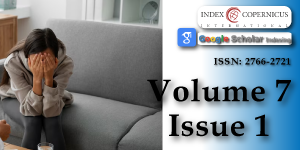Responding to disasters: about the governance of post-nuclear accident situations
Main Article Content
Abstract
Every society organizes itself to reduce the complexity of living together in order to ensure relative peace of mind for its members. Major technological accidents such as the Chernobyl or Fukushima nuclear accidents are violent disruptions that affect the quality of life of tens of thousands of people and generate increased distrust and anxiety among them as well as the questioning of the state system’s ability to restore some peace of mind. Past experience has shown that the measurement of radiation and the development of local projects with the support of professionals and experts prove to be effective levers for those affected to regain the ability to make decisions for their protection and to assess the protective actions implemented collectively. It also showed that restoring confidence and restoring the dignity of these people, seriously impaired by the accident, takes time.
Article Details
Copyright (c) 2023 Lochard J.

This work is licensed under a Creative Commons Attribution 4.0 International License.
IAEA. The International Nuclear and Radiological Event Scale. International Atomic Energy Agency, Vienna. 2008.
Nisbet A, Watson S, Brown J. UK Recovery Handbooks for Radiation Incidents 2015. Version 4. PHE-CRCE-018. Public Health England, London. 2015.
Lochard J. Stakeholder engagement in regaining decent living conditions after Chernobyl. In: Oughton, D., Hansson, S.O. (Eds.), Social and Ethical Aspects of Radiation Risk Management. Radioactivity in the Environment. 2013; Elsevier, Amsterdam 9: 311–331.
Eikelmann I, Hériard Dubreuil G. Local populations facing long-term consequences of nuclear accidents: Lessons learnt from Chernobyl and Fukushima. Radioprotection. 2016. 51(HS2). S155-S158(2016). www.radioprotection.org.
Bromet EJ, Havenaar JM, Guey LT. A 25 year retrospective review of the psychological consequences of the Chernobyl accident. Clin Oncol (R Coll Radiol). 2011 May;23(4):297-305. doi: 10.1016/j.clon.2011.01.501. Epub 2011 Feb 16. PMID: 21330117.
Bromet EJ. Emotional consequences of nuclear power plant disasters. Health Phys. 2014 Feb;106(2):206-10. doi: 10.1097/HP.0000000000000012. PMID: 24378494; PMCID: PMC3898664.
Girard P, Hériard Dubreuil G. Stress in accident and post-accident management at Chernobyl. J Radiol Prot. 1996; 16: 167-180.
Maeda M, Oe M. Mental Health Consequences and Social Issues After the Fukushima Disaster. Asia Pac J Public Health. 2017 Mar;29(2_suppl):36S-46S. doi: 10.1177/1010539516689695. PMID: 28330398.
Kai M. Experience and current issues with recovery management from the Fukushima accident. Ann ICRP. 2015 Jun;44(1 Suppl):153-61. doi: 10.1177/0146645315572292. Epub 2015 Mar 9. PMID: 25816269.
Ando R. Trust-what Connects Science to Daily Life. Health Phys. 2018 Nov;115(5):581-589. doi: 10.1097/HP.0000000000000945. PMID: 30260848.
Lochard J, Schneider T. An overview of the dialogue meetings initiated by ICRP in Japan after the Fukushima accident. Radioprotection. 2019; 54 (2), 87–101. https://www.radioprotection.org/articles/radiopro/full_html/2019/02/radiopro190031/radiopro190031.html
IAEA. Preparedness and Response for a Nuclear or Radiological Emergency. IAEA Safety Standards Series No. GSR Part 7. International Atomic Energy Agency, Vienna. 2015.
Schneider T, Lochard J. Supporting societal and economic dynamic of recovery: Lessons from Chernobyl and Fukushima. In: Proceedings of the ICRP International Conference on Recovery after Nuclear Accident: Radiological Protection Lessons from Fukushima and Beyond. Ann ICRP. 2021; 50(S1): 68-73.
Ando R. Measuring, discussing, and living together: lessons from 4 years in Suetsugi. Ann ICRP. 2016 Jun;45(1 Suppl):75-83. doi: 10.1177/0146645315615018. Epub 2015 Dec 1. PMID: 26626285.
Liland A, Skuterud L. Lessons learned from Chernobyl accident in Norway. In: Oughton, D., Hansson, S.O. (Eds.), Radioactivity Social and Ethical Aspects of Radiation Risk Management in the Environment. Elsevier, Amsterdam, 2013; 159–176.
Lochard J. The post-nuclear accident co-expertise experience of the Suetsugi community in Fukushima Prefecture. Radioprotection. 2020: 55(3): 225–235. https://www.radioprotection.org/articles/radiopro/pdf/2020/05/radiopro200049.pdf
Takamura N, Orita M, Taira Y, Fukushima Y, Yamashita S. RECOVERY FROM NUCLEAR DISASTER IN FUKUSHIMA: COLLABORATION MODEL. Radiat Prot Dosimetry. 2018 Dec 1;182(1):49-52. doi: 10.1093/rpd/ncy150. PMID: 30165609.
Yasutaka T, Kanai Y. Dialogue, radiation measurements and other collaborative practices by experts and residents in the former evacuation areas of Fukushima: a case study in Yamakiya District, Kawamata Town. Radioprotection. 2020; 55(3): 215–224.
Igarashi Y. The Round-Table project in Kashiwa: a dialogue to reconcile consumers and farmers in the Tokyo suburbs after the Fukushima accident. Radioprotection. 2022; 57(3): 209-215.
Cho KW, Cantone MC, Kurihara-Saio C, Le Guen B, Martinez N, Oughton D, Schneider T, Toohey R, ZöLzer F; Authors on behalf of ICRP. ICRP Publication 138: Ethical Foundations of the System of Radiological Protection. Ann ICRP. 2018 Feb;47(1):1-65. doi: 10.1177/0146645317746010. Erratum in: Ann ICRP. 2021 Mar 19;:1466453211000252. PMID: 29457463.
Schneider T, Maître M. The role of radiological protection experts in stakeholder involvement in the recovery phase of post-nuclear accident situations: Some lessons from the Fukushima-Daïchi NPP accident. Radioprotection. 2019; 54(4): 259–270.
Kai M, Homma T, Lochard J, Schneider T, Lecomte JF, Nisbet A, Shinkarev S, Averin V, Lazo T. ICRP Publication 146: Radiological Protection of People and the Environment in the Event of a Large Nuclear Accident : Update of ICRP PUBLICATIONS 109 AND 111. Ann ICRP. 2020 Dec;49(4):11-135. doi: 10.1177/0146645320952659. PMID: 33291942.
Win TZ. Risk communication in the recovery phase after a nuclear accident: the contribution of the co-expertise process. Radioprotection. 2022; 57(4): 281–288.
Lochard J, Bogdevitch I, Gallego E, Hedemann-Jensen P, McEwan A, Nisbet A, Oudiz A, Oudiz T, Strand P, Janssens A, Lazo T, Carr Z, Sugier A, Burns P, Carboneras P, Cool D, Cooper J, Kai M, Lecomte JF, Liu H, Massera G, McGarry A, Mrabit K, Mrabit M, Sjöblom KL, Tsela A, Weiss W; International Commission on Radiological Protection. ICRP Publication 111 - Application of the Commission's recommendations to the protection of people living in long-term contaminated areas after a nuclear accident or a radiation emergency. Ann ICRP. 2009 Jun;39(3):1-4, 7-62. doi: 10.1016/j.icrp.2009.09.008. Erratum in: Ann ICRP. 2013 Aug;42(4):343. PMID: 20472181.
NEA. Stakeholders and Radiological Protection: Lessons from Chernobyl 20 Years After. NEA No. 6170. Nuclear Energy Agency, Paris. 2006.
NEA. The Fukushima Daiichi Nuclear Power Plant Accident: OECD/NEA Nuclear Safety Response and Lessons Learnt. NEA No. 7161. Nuclear Energy Agency, Paris. 2

